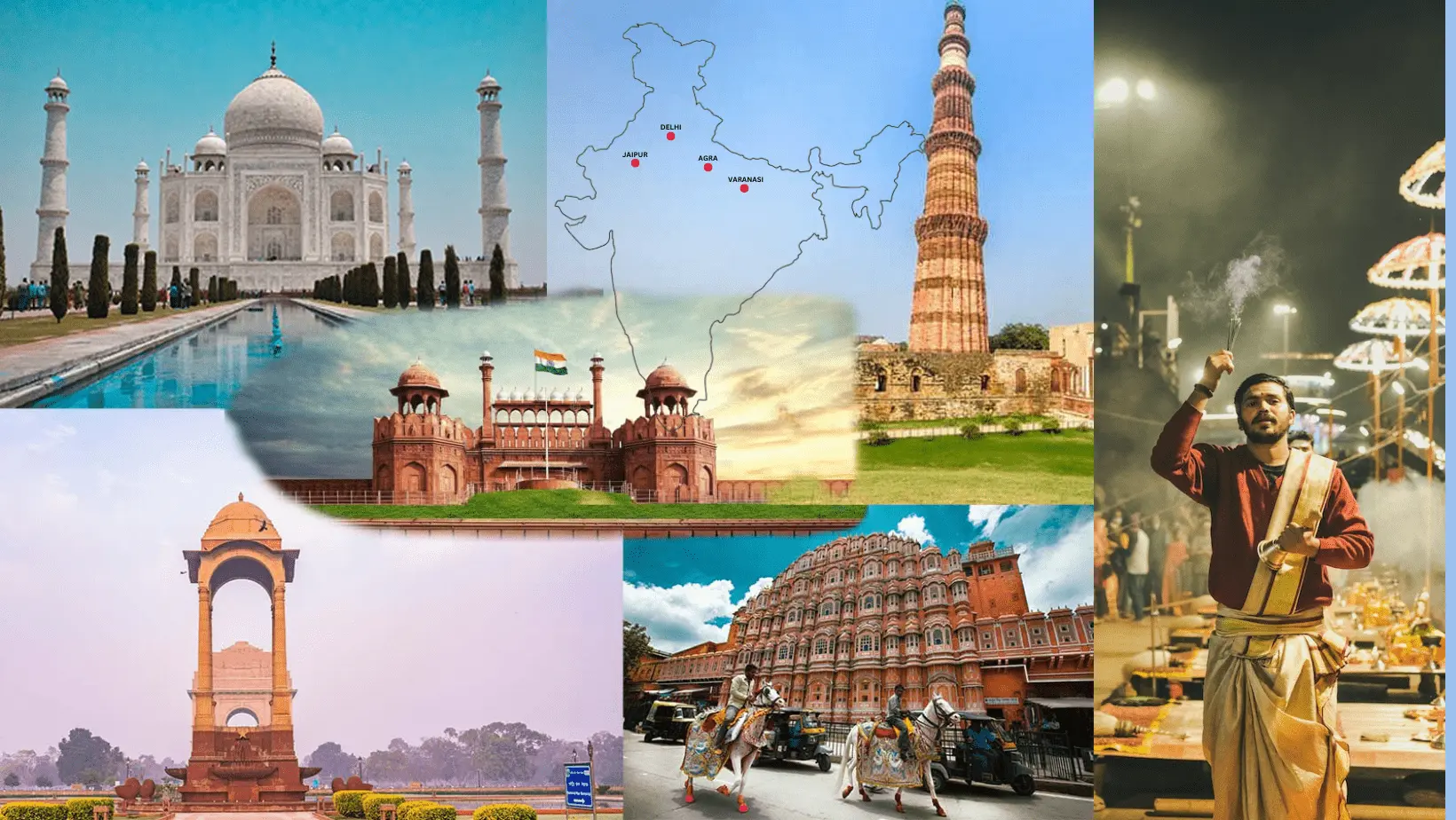What Every International Visitor Should Know About the Golden Triangle Tour
What Every International Visitor Should Know About the Golden Triangle Tour
Blog Article
The Golden Triangle Tour is one of the most popular and iconic travel circuits in India. Connecting the vibrant cities of Delhi, Agra, and Jaipur, this route offers international visitors a remarkable introduction to the country’s diverse cultural heritage, architectural wonders, and culinary delights. Each city on this journey has its own unique character, shaped by centuries of history and tradition. The tour generally covers major landmarks like the Taj Mahal, Red Fort, Qutub Minar, City Palace Jaipur, and Amber Fort, ensuring that visitors experience both Mughal and Rajput grandeur during their travels.
International travelers embarking on this journey should familiarize themselves with local customs, dress codes, and etiquette. For example, it is advisable to dress modestly, especially when visiting religious sites, and to remove shoes before entering temples and mosques. Respect for local traditions enhances the travel experience and fosters positive interactions with the local communities.
In addition, foreign visitors are encouraged to plan their tour during the cooler months between October and March, when the weather is most comfortable for sightseeing. The region can be quite warm during summer, which may affect travel comfort, particularly at open-air monuments.
Key Attractions and Experiences for Foreign Travelers
One of the most compelling reasons to choose the Golden Triangle Tour With Ranthambore is the opportunity to combine cultural exploration with wildlife adventure. The addition of Ranthambore National Park, renowned for its tiger population and diverse flora and fauna, enriches the experience for international tourists seeking variety in their itinerary. A guided safari through Ranthambore provides a chance to witness India’s majestic wildlife in its natural habitat, something that appeals strongly to travelers interested in nature and conservation.
The Golden Triangle also offers rich culinary experiences. Each city presents its own regional flavors—from the Mughlai delicacies of Delhi to the spicy street food of Jaipur. International visitors should approach local food thoughtfully; opting for freshly prepared dishes at reputable establishments is generally recommended. It is also wise to consume bottled or filtered water and to avoid raw fruits and vegetables that may have been washed in tap water.
Shopping is another highlight, as the Golden Triangle is famous for its handicrafts, textiles, jewelry, and artworks. Visitors should explore local bazaars like Chandni Chowk in Delhi, Sadar Bazaar in Agra, and Johari Bazaar in Jaipur for authentic souvenirs. Bargaining is common practice in these markets and can be an enjoyable cultural exchange if done respectfully.
Practical Travel Advice for International Visitors
Foreign travelers should ensure they have the correct visa before entering India. An e-Visa is available for citizens of many countries and can be applied for online prior to arrival. It is also prudent to carry photocopies of important documents such as the copyright, visa, and travel insurance papers, keeping the originals safe in the hotel or a secure travel pouch.
When using local transportation, many international visitors opt for private vehicles with drivers arranged through reputable tour operators. This approach offers both convenience and safety, especially when navigating the busy streets of Indian cities. Ride-hailing apps are increasingly available in urban areas, but foreign visitors should be cautious of unregulated taxi services.
Health precautions are essential. It is advisable to consult a healthcare provider before travel regarding recommended vaccinations. Many travelers carry a small medical kit with basic supplies such as hand sanitizer, medications for upset stomach, and insect repellent.
Currency exchange facilities are available at airports, hotels, and authorized outlets. It is recommended to retain receipts of exchange transactions, as they may be required for reconversion of currency at the end of the trip.
Extending Your Golden Triangle Journey to Varanasi
For those looking to deepen their cultural understanding of India, the Golden Triangle Tour with Varanasi is a valuable extension. Varanasi, considered one of the oldest continuously inhabited cities in the world, offers foreign visitors a profound glimpse into India’s spiritual traditions. The city’s famous ghats along the Ganges River are sites of daily rituals, from sunrise prayers to evening aarti ceremonies, creating powerful and unforgettable experiences.
International visitors to Varanasi should be prepared for the city’s intensity. The narrow lanes, vibrant street life, and spiritual energy can be overwhelming at first but ultimately rewarding for those who engage with respect and openness. Photography is generally welcome at many sites, but always seek permission before photographing people, particularly during religious activities.
Travelers extending their journey to Varanasi should plan their accommodations and guides carefully. Opting for hotels or guesthouses with good reviews ensures comfort and security in this deeply traditional city. A local guide can help interpret the significance of rituals and sites, adding context that greatly enriches the experience for foreign tourists.
Summary
The Golden Triangle circuit is a gateway to India’s rich cultural tapestry for foreign visitors. Whether focusing solely on Delhi, Agra, and Jaipur or combining these cities with wildlife and spiritual experiences through additions like Ranthambore or Varanasi, this tour offers diverse and memorable encounters. Visitors who take time to understand local customs, plan logistics carefully, and approach their travels with curiosity and respect will find their Golden Triangle journey both enriching and unforgettable.
Report this page